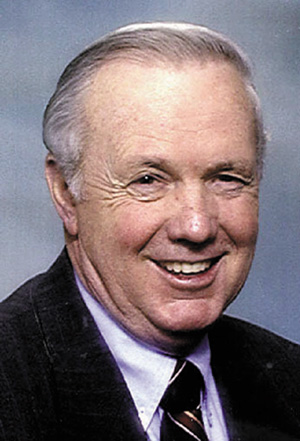No. 653 - HISTORY ON A GRAND SCALE
No. 653
Jim Davidson -- NEWSPAPER COLUMN
HISTORY ON A GRAND SCALE
When someone first made the statement, “Behind every successful man is a good woman,” they surely had John and Abigail Adams in mind. John Adams was our nation’s second president, and perhaps the best thing that ever happened to him was when he married Abigail, because she was largely responsible for his success. They had four children, and one, John Quincy Adams, also became president of the United States.
John Adams was a lawyer, a farmer, and a graduate of Harvard College. When dismounted, he stood 5-foot-7 or 5-foot-8 inches tall, about “middle size” in that day — and though verging on portly, he had a straight-up, square-shouldered stance and was, in fact, surprisingly fit and solid. His hands were the hands of a man accustomed to pruning his own trees, cutting his own hay and splitting his own firewood.
It took me a while, but I have just finished reading one of the most fantastic books I have ever read -- “John Adams” by David McCullough and published by Simon & Schuster. This book contains 650 pages plus another 100 pages of source notes, bibliographical material and the index. It had to be a foreboding and daunting task to collect information and write this book. Those of us who care about our nation’s history will always be grateful for this good man’s work, that I would call a masterpiece.
John Adams was brilliant and, due to the continued correspondence between him and Abigail, we have insights into their private lives that enable us to know them as no other Americans of this founding era. Much of the content of this book was drawn from the more than one thousand surviving letters between them, nearly half of which were never published.
This book reads like a novel, and the thing that makes it so interesting is to understand that it is our own history, the life and times of our Founding Fathers in a day and time when no one knew how it would all turn out. There was no Social Security or Medicaid for them. These brave patriots, who went from the simple concept of “no taxation without representation” to declaring independence from the British Crown, risked everything they had, including their lives. This is indeed history on a grand scale and the cast of characters will be, or should be, familiar to every American citizen.
George Washington, Thomas Jefferson, Benjamin Franklin, John Jay, Alexander Hamilton, James Madison, John Marshall, Talleyrand and Aaron Burr all figure in this panoramic chronicle. Crucial to the story, as it was to history, is the relationship between Adams and Thomas Jefferson, born opposites -- one a Massachusetts farmer’s son, the other a Virginia aristocrat and slave master; one short and stout, the other tall and spare.
Adams embraced conflict; Jefferson avoided it. Adams had great humor; Jefferson very little. But they were alike in their devotion to their country.
At first they were ardent co-revolutionaries, then fellow diplomats and close friends. With the advent of the two political parties, they became archrivals, even enemies, in the intense struggle for the presidency in 1800, perhaps the most vicious election in our nation’s history. Then amazingly they became friends again, and ultimately, incredibly, they died on the same day -- their day of days -- July 4, in the year 1826.
Now, I will be the first to admit that I have painted with a very broad brush, which is all you can do with a subject of this magnitude. The scope of this book travels all the way from the birth of John Adams in Braintree, Mass., in 1735, to several years beyond his death. It includes the uprising by the colonies, the Declaration of Independence, the Revolutionary War, establishing a seat of government, the writing and adoption of the U.S.
Constitution, ratification by the 13 colonies and so much more.
The whole book is fantastic, but there is one particular aspect of the book that really grabbed my attention -- how much books and reading played in the lives of these two past presidents. Thomas Jefferson was strapped for cash and sold his book collection to the government in Washington to replace the collection of the Library of Congress, destroyed by the British when they burned the Capitol. The price was $23,950 and contained 6,707 volumes. It took 10 wagons to carry them to Washington, our nation’s new capital.
Adams’ collection contained more than 3,200 volumes. He would be out of bed and reading by candlelight at five in the morning, and later would read until well into the night. When his eyes would grow weary, Abigail would read out loud to him.
This says to me that reading is a key element in a person’s success. If we want to be truly educated, we should all read more.
---
(EDITOR'S NOTE: Jim Davidson is a public speaker and syndicated columnist. You may contact him at 2 Bentley Drive, Conway, AR 72034. To support literacy, buy his book: “Learning, Earning & Giving Back.”)
